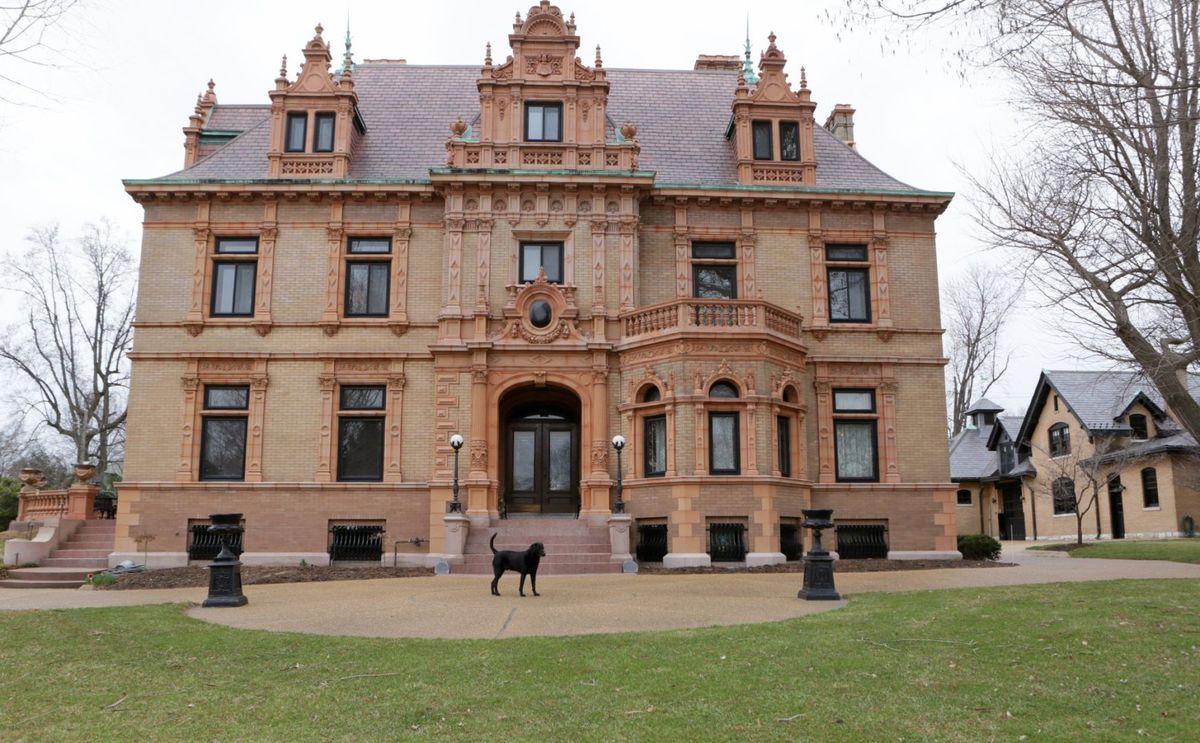#6943. Elegant Beaux-Arts Mansion with Luxurious Sandstone Facade
Before us stands a magnificent example of Beaux-Arts architecture—a luxurious mansion with an expressive sandstone facade demonstrating the refined eclecticism of the late 19th century. The facade is characterized by a symmetrical composition with a central entrance portal, accentuated by a richly decorated pediment. Particularly noteworthy is the mansard roof with slate covering and decorative elements.
The architectural language of the facade is rich with decorative elements: pediments, bas-reliefs, cornices, and window casings executed with exceptional craftsmanship. The vertical articulation of the facade is emphasized by pilasters, while the horizontal is defined by cornices and inter-floor belts. The mansion is faced with light-colored brick that harmoniously combines with the darker base, creating visual stability in the composition.
The round window in the central part and the semicircular bay window on the side facade add plasticity and bring variety to the strict geometry of the building. The grand staircase with wrought iron railings emphasizes the monumentality of the entrance. In the foreground, a dog sculpture adds a picturesque accent to the overall composition.
When designing a modern facade, one can adopt techniques used in this mansion: symmetry as the basis of composition, highlighting the central axis, combining different textures and materials, and using decorative elements to create an expressive appearance. It's important to remember proportions and rhythm when placing windows and architectural details.
